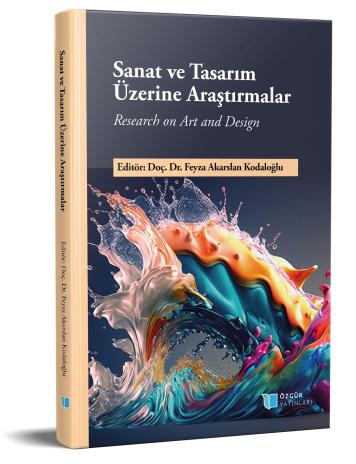
Maurıts Cornelıs Escher’in “Gece ve Gündüz” Adlı Eseri Üzerine Bir İnceleme
Şu kitabın bölümü:
Akarslan Kodaloğlu,
F.
(ed.)
2023.
Sanat ve Tasarım Üzerine Araştırmalar.
Özet
Maurits Cornelis Escher, "Gece ve Gündüz" adlı eseriyle sanat dünyasında çarpıcı bir etki yaratıyor. Bu eser, Escher'in karakteristik tarzını yansıtan karmaşık geometrik desenler ve optik illüzyonlarla doludur. İki boyutlu bir düzlemde gerçeklik algısını sorgulayan sanatçı, görsel çelişkilerle izleyiciyi etkilemeyi başarıyor. Escher, "Gece ve Gündüz" eserinde siyah ve beyaz renklerle kontrast oluştururken, geometrik şekiller ve figürler arasında karmaşık bir ilişki kuruyor. Tekrar eden desenler, sonsuz döngüler ve tersine çevrilen formlar, eserin merkezi temasını oluşturur. İzleyici, bir yandan düzeni ve simetriyi takip ederken, diğer yandan çelişkili ve çift anlamlı bir dünyanın içine çekilir.
Escher'in ustalığı, görsel yanılsamalar yaratma becerisiyle birleşir. "Gece ve Gündüz"de, pozitif ve negatif alanların ustaca birleşimiyle oluşturulan motifler izleyicinin dikkatini çeker. Bu, sanatçının gerçeklik algısını bozan optik illüzyonlarını vurgulayan bir örnektir. "Gece ve Gündüz"ün temelinde, zıtlıkların bir araya gelerek uyum içinde var olabileceği fikri yatar. Escher, görsel bir paradoksla yalnızca estetik bir deneyim sunmakla kalmaz, aynı zamanda insan düşüncesinin karmaşıklığına da bir gönderme yapar. Sonuç olarak, "Gece ve Gündüz" Maurits Cornelis Escher'in sanatsal dehasını ve sıra dışı bakış açısını sergileyen etkileyici bir eserdir. Bu resmin 600'den fazla baskısı yapılmış pek çok ülkede sergilenmiştir. Türk sanat izleyicilerinin mutlaka yakından görmesi ve detaylarını incelemesi, gereken önemli bir eser olduğunu belirtmek gerekir.

